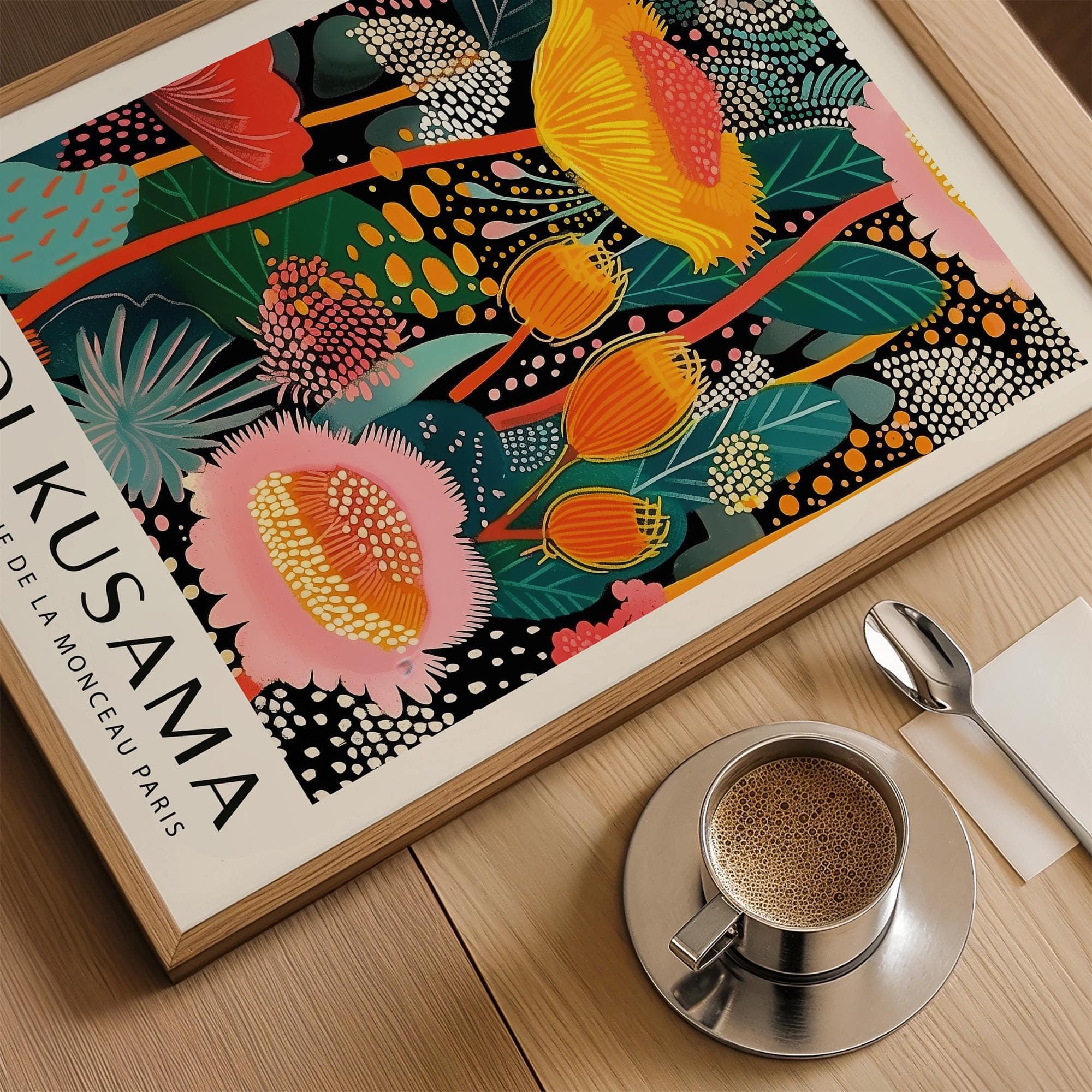Japanese flower artwork is more than decoration—it's a reflection of centuries-old traditions, philosophies, and the natural world. From graceful arrangements to intricate woodblock prints, flowers have long played a key role in Japanese art, culture, and daily life.
In this blog, we’ll uncover how flowers became such an essential symbol in Japanese art, explore the techniques and periods that shaped their evolution, and show you how these works continue to influence modern design.
The Roots of Japanese Flower Artwork
Flowers have been featured in Japanese artwork for over a thousand years. These early depictions weren’t just for beauty—they carried meanings linked to nature, seasons, and even good fortune.
Influenced by Buddhism and ideas from China and India, Japanese artists began using floral imagery to represent life’s cycles: bloom, rest, decay, and rebirth.
By the time of the Meiji period in the late nineteenth century, Japanese flower artwork had grown into a refined art form practiced by masters and appreciated by the imperial family.
Japanese Art and the Language of Nature
Japanese art has always drawn inspiration from nature. From bamboo forests to winter snow scenes, artists used their surroundings as a source of calm and balance.
Flowers—especially blossoms like cherry and plum—became symbols of hope, peace, and beauty. The detailed style and minimal compositions often seen in Japanese art reflect an intentional effort to capture fleeting moments.
Unlike Western art, which often aimed for realism, Japanese paintings and prints focused on evoking feelings and atmosphere—what you might call the "mood" of a bloom rather than a photo of it.
Ikebana: The Art of Japanese Flower Arrangement
One of the most iconic forms of Japanese flower artwork is ikebana, or Japanese flower arrangement. This art form goes back centuries and was originally practiced in temples as a spiritual offering.
But ikebana isn’t just about putting flowers in a vase. It’s about composition, balance, and symbolism. Every element—flowers, branches, leaves—is placed with intention.
Ikebana reflects the philosophy that less is more. A tall pine branch next to a single bloom may represent strength and renewal. A slanting bamboo stem might evoke resilience through hardship.
These arrangements are designed to be viewed from a specific angle, with asymmetry and open space playing key roles—quite different from Western bouquets.
Japanese Woodblock Prints: Flowers in Every Season
Japanese woodblock prints—especially those from the Edo and Meiji periods—are among the most celebrated examples of flower artwork. Artists like Hiroshige and Hokusai created thousands of prints featuring seasonal flowers, often paired with birds, insects, or landscapes. For those interested in owning similar artwork, consider exploring Japanese Art Posters that showcase vibrant designs inspired by traditional Ukiyo-e craftsmanship.
These prints weren’t just art for the elite. They were affordable and widely distributed, making them a part of everyday life and culture. Many featured flowers that represented specific seasons or emotions:
-
Cherry blossoms: fleeting beauty and the passing of time
-
Peonies: wealth and honor
-
Plum blossoms: perseverance through cold
-
Chrysanthemums: imperial power and longevity
Each image was composed with care, often combining soft lines, rich color, and layered detail to highlight the textures and movement of each bloom.
Flower Prints in Popular Culture
Japanese flower prints didn’t stay confined to traditional art circles. By the nineteenth century, these images had made their way into Western popular culture, influencing Impressionists and designers alike.
Today, you can see echoes of this tradition in everything from anime and manga to fashion, ceramics, and home décor.
Japanese flower artwork continues to inspire tattoo designs, digital illustrations, and wall art prints, offering people around the world a visual link to the calming power of nature.
Kyoto, Museums, and the Legacy of Flower Art
The city of Kyoto, once the imperial capital of Japan, remains a hub for traditional art forms. Museums here hold centuries-old flower scrolls, paintings, and preserved ikebana arrangements that illustrate the depth of Japanese flower culture.
Modern exhibitions now showcase both antique and contemporary works, demonstrating how the design and techniques have evolved while staying rooted in the same core principles—nature, balance, and the beauty of impermanence.
This ongoing legacy keeps Japanese flower artwork relevant today, even in a world filled with fast-changing trends and digital distractions.
A Close-Up on Techniques and Detail
What makes Japanese flower artwork so captivating is often the detail. Whether in a woodblock print or a delicate illustration, artists strive to capture more than what the eye can see.
They use subtle contrast in line weight, intentional white space, and careful composition to highlight the essence of a flower. Some prints even feature background patterns that include snow, birds, or textured clouds to add dimension without overpowering the main subject.
This style of visual storytelling—evoking rather than explaining—is what makes Japanese flower art feel timeless.
Why Flower Art Still Blooms in Modern Life
Today, Japanese flower artwork is more accessible than ever. Whether you’re shopping for high-quality flower prints or attending a virtual ikebana workshop, this art form is reaching new audiences across the globe.
In home décor, Japanese flower art brings a sense of peace, rest, and harmony. It invites people to slow down and reconnect with the natural world.
Designers now blend old motifs with modern elements, making this artwork a great fit for minimalist, bohemian, and Scandinavian interiors alike.
Final Thoughts: More Than Just Flowers
Japanese flower artwork isn’t just about blossoms. It’s about the way those blossoms are composed, composed, and introduced into visual language. It’s about reflecting nature’s beauty without needing to imitate it.
Whether it’s a serene pine in winter or a bloom at its peak, these images offer something that transcends art. They represent life itself—in all its contrast, simplicity, and grace.











































